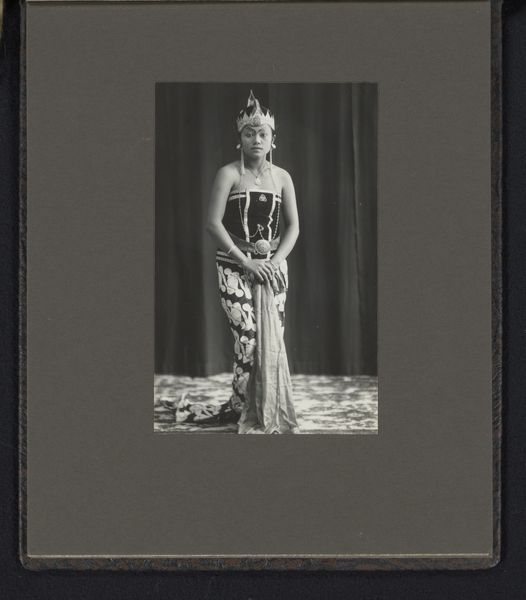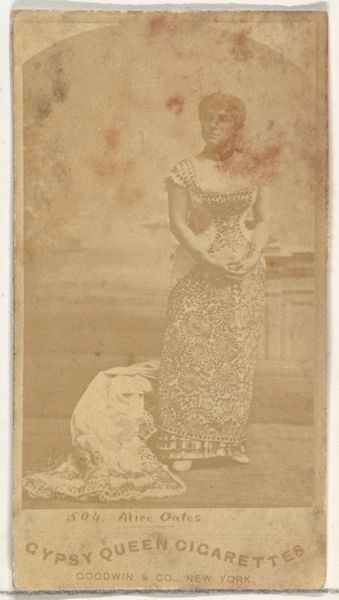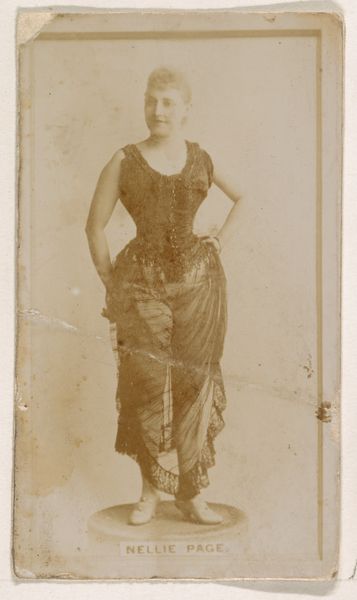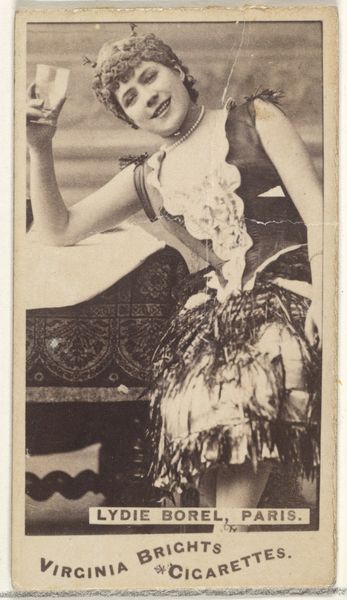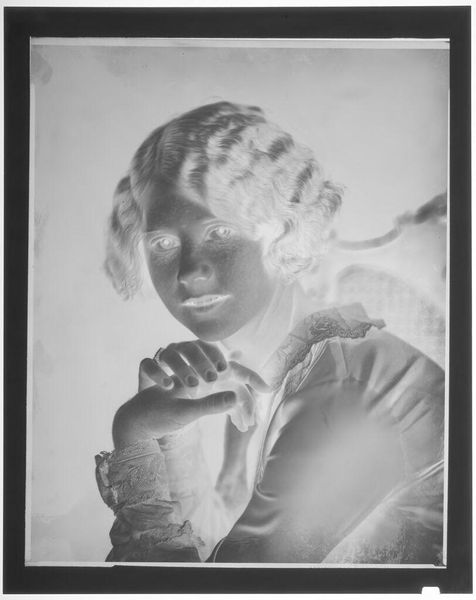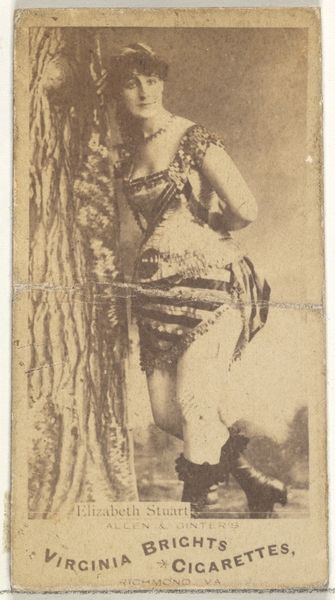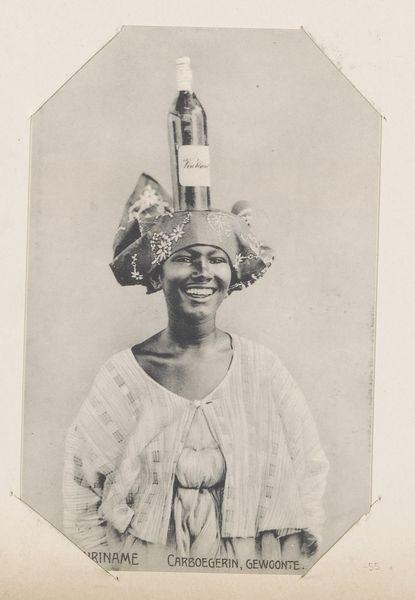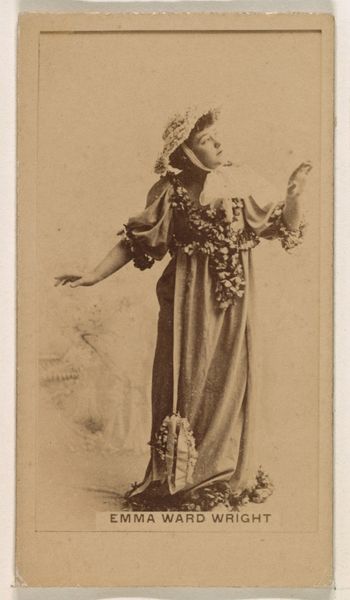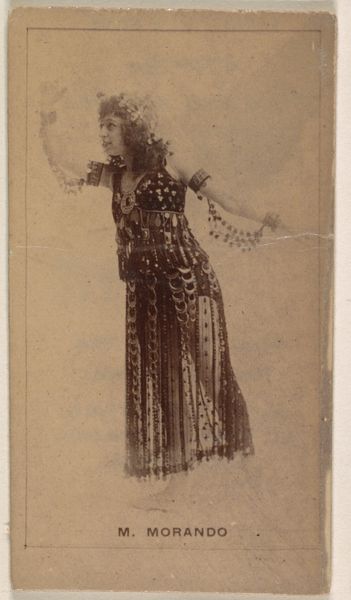
photography
#
asian-art
#
indigenism
#
photography
#
realism
Dimensions: height 180 mm, width 223 mm
Copyright: Rijks Museum: Open Domain
Curator: Looking at this somber photograph, I immediately notice the detailed patterning in the fabric of the dancer's costume, which contrasts with her somewhat disengaged facial expression. What do you see when you first encounter this image? Editor: My attention is drawn to the way light renders the textures of the batik, and the decorative accessories of this Javanese dancer; and how the image making draws upon studio conventions. This work by Adeline Andrea du Celliee Muller is titled, "Portrait of a Javanese Dancer." and dates from somewhere between 1930 and 1940. Curator: Right. Considering its historical context, it makes me consider the artist’s relationship to their subject and the Western gaze onto Indonesian culture during the colonial period. It evokes so many conversations about the appropriation of identity and what agency the sitter really had. Editor: Well, agency is interesting here, particularly the performance aspect implied through gesture and pose. And that then intersects with our reading of production and reception – both reliant upon photographic chemistry. I’m curious, what can we know about the origin of those dyes and fabric in this period and their distribution and availability? Curator: Precisely, to see the performance, we must question who wrote the script, who benefits. What this image holds within its fibers is so much about social and cultural hierarchies. This portrait makes me think about visibility and its ramifications for marginalized communities then, as well as today. Editor: Absolutely, and thinking of material culture provides access to a way in which we could continue those conversations: what can we glean about the networks that supported both Muller and the dancer. What social pressures acted upon the creation of the print? Curator: Considering how photography as a medium evolved alongside colonial expansion opens up conversations on power dynamics and representational politics, wouldn’t you agree? Editor: Certainly, reflecting on both the image making, performance, materials and the means and mechanics involved reveals new dimensions about cultural consumption, particularly if viewed as a conduit for ongoing conversations and critique. Curator: I will think about this photograph with more intention in terms of representation and cultural performance. It's more than just an image, isn’t it? Editor: Precisely, the network of people and commodities surrounding this piece, along with all the hands and minds engaged in it, can tell a lot. A lot more.
Comments
No comments
Be the first to comment and join the conversation on the ultimate creative platform.
